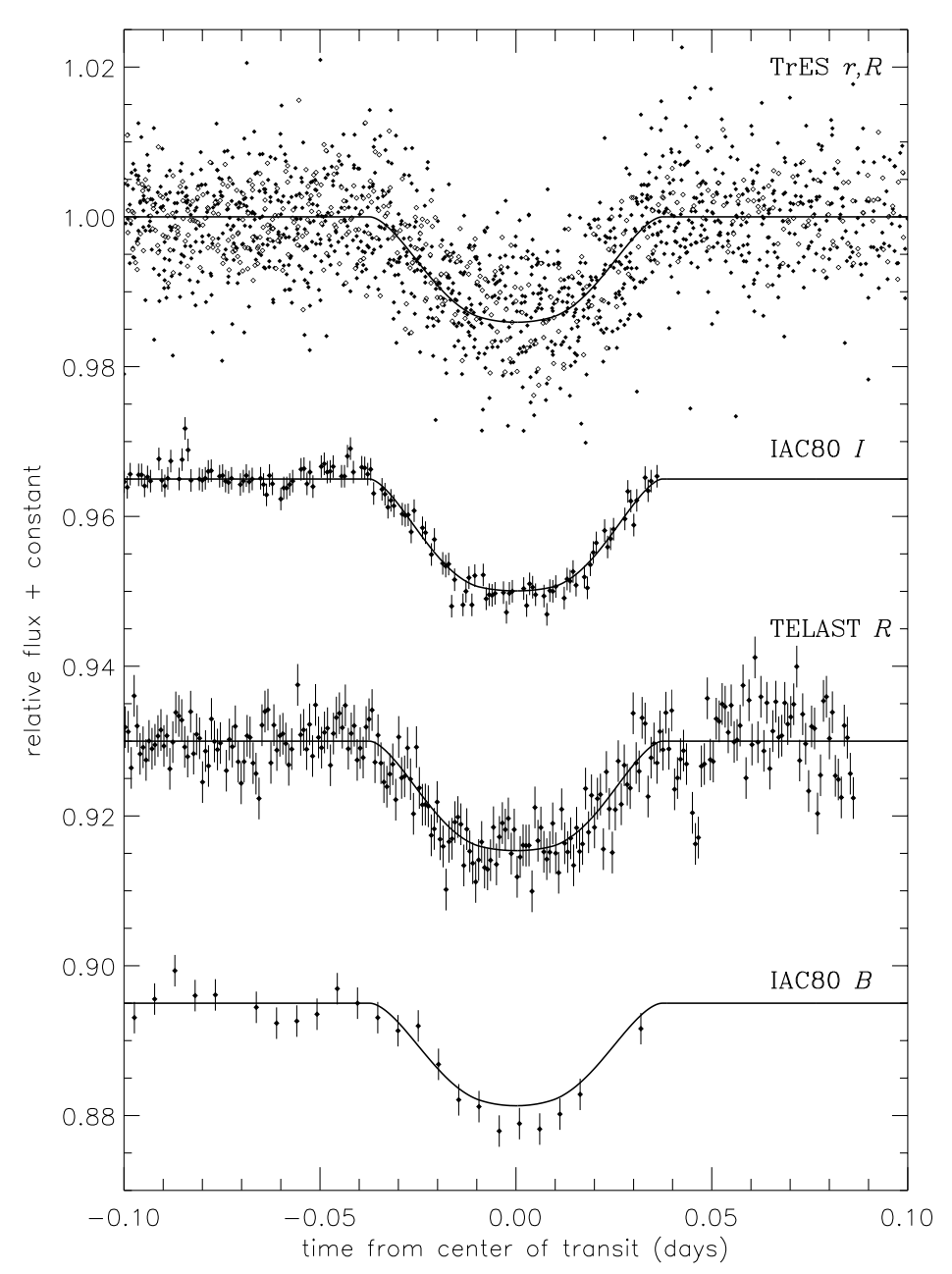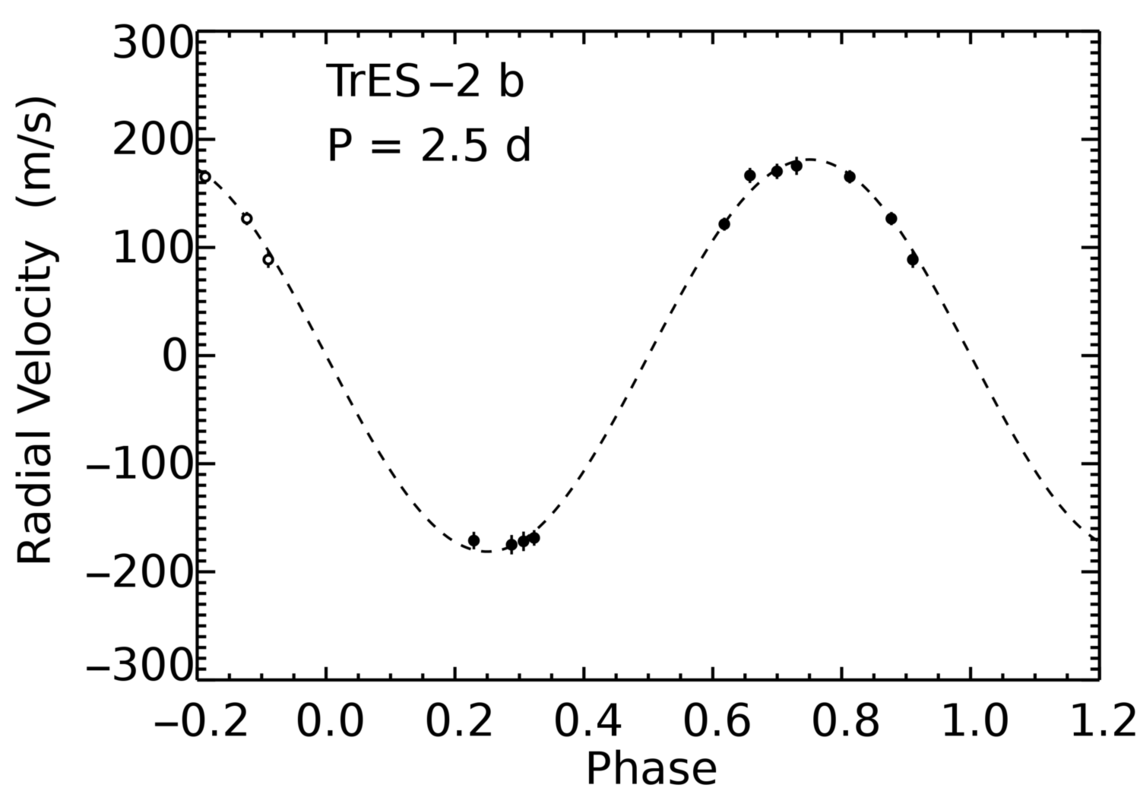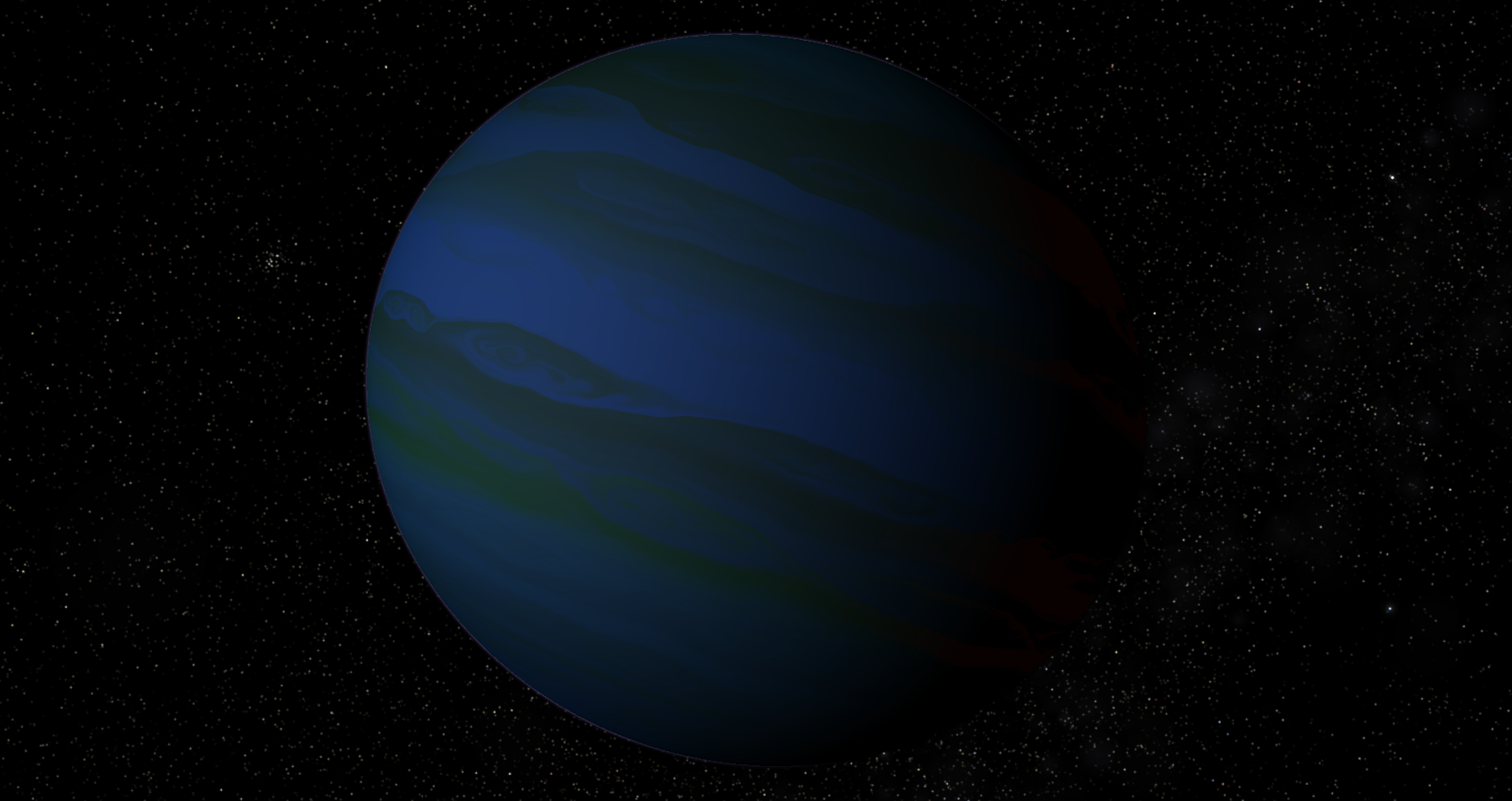TrES-2: Most Massive Nearby Transiting Exoplanet
Introduction
The Trans-atlantic Exoplanet Survey (TrES) was a network of telescopes, Sleuth, PSST and STARE, that was used to search the skies for gas giants orbiting other stars that occasionally cross the disk of the stars. The TrES team had our first successful detection of such a transiting planet with the discovery of TrES-1. We were pleased to announce the discovery of our second planet, TrES-2 (original webpage), which was the most massive of the known transiting planets within ~750 light years.

TrES-2 was identified from observations made with the 10-cm telescopes, Sleuth and PSST. When the brightness of the star TrES-2 was monitored over several months, numerous 1.4% transits of the star were detected. The light curve derived from these TrES observations is shown above. Also shown are the light curves from more recent observations of TrES-2, made at various optical wavelengths. These follow-up observations showed a consistent transit depth, independent of the wavelength. (A wavelength-dependent depth would indicate that the eclipsing system was in fact an multiple-star system, not a planet orbiting a star.)

Confirmation of the planet required the use of one of the 10-m Keck telescopes, the world’s largest optical telescopes. The wobble of the star caused by the presence of a massive companion was measured, and proved to be consistent with a planetary companion (a radial velocity semi-amplitude of 182 m/s).
Much about the new planet was novel. It was the most massive (1.28 Jupiter masses) of the known transiting planets that orbit around nearby, bright stars. It crosses the star at a high stellar latitude (see illustration below; click for an animation). It is the first transiting planet to be found in the an area of the sky known as the Kepler field, which has been singled out as the targeted field of view for the NASA Kepler mission. Using a satellite-based telescope, Kepler stared at this patch of sky for four years, and discovered hundreds of giant planets and Earth-like planets. Finding a planet in the Kepler field with our method allowed astronomers to plan future observations with Kepler that include searching for moons around TrES-2.
Details of TrES-2, the Star
- Position: 19h 07m 14.03s +49d 18m 59.3s (J2000)
- V Magnitude: 11.4 magnitudes
- Spectral Type: G0V
- Mass: 1.08 solar masses
- Radius: 1.00 solas masses
Details of TrES-2, the Planet
- Orbital Period: 2.47063 days
- Semi-Major Axis: 0.0367 AU = 5.5 million kilometers
- Orbital Inclination: 83.9 degrees
- Mass: 1.28 Jupiter masses
- Radius: 1.24 Jupiter radii
TrES-2 Press and Links
- Stephen Colbert adopts TrES-2!
- Wikipedia entry.
- Harvard Crimson, “New Planets Discovered”.
- SpaceFlight Now, “Jupiter-size planet found by telescope network”.
- Contra Costa Times, “Astronomers find planet using amateur telescopes”.
- Tucson Citizen, “Small ‘scope used in discovery of new planet”.
- Kentucky.com, “Distant planet found”.
- Space.com, “Modified Backyard Telescopes Find Extrasolar Planet”.
- International Reporter, “10cm telescope discovers Jupiter-sized planet”.
- ABC, “Tiny telescope finds giant planet”.
- NASA.gov, “‘Sleuth’ Telescope Snags a Rare Planet Type”.
- Physorg.com, “Massive Planet Found by Astronomers Using Novel Network of Tiny Telescopes”.
- Planetary Society, “Jupiter-Sized Extrasolar Planet Found Using Novel Small Telescope Network”.
- MoonToday.net, “Astronomers Find Jupiter-Sized Transiting Planet Using Innovative Telescope Network”.
- SpaceRef.com, “Astronomers Find Jupiter-Sized Transiting Planet Using Innovative Telescope Network”.
- More from Greg Laughlin about TrES-2.
- Astrobiology Magazine, “Draconian Planet”.
- NASA Solar System Exploration, “Jupiter-Sized Transiting Planet Found by Astronomers Using Novel Telescope Network.”
- Universe Today, “Network of Small Telescopes Find a Big Planet”.
- Centauri Dreams, “Collaboration Bags a Transiting Gas Giant”.
- NewScientistSpace, “Alien planet poised to reveal all its secrets”.
- Discovery News, “Distant, Jupiter-Sized Planet Detected”.
- Greg Laughlin, of UC Santa Cruz and transitsearch.org, blogs about TrES-2.
- Wikipedia entry.
- Extrasolar Planets Encyclopaedia entry.
- Lowell Observatory Press Release.
- Harvard-Smithsonian Center for Astrophysics Press Release.
- Caltech Press Release.


Leave a comment